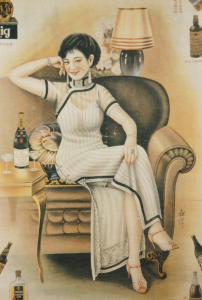The movie, The Last Emperor, follows the life story of the last emperor of china. The interesting thing about this empero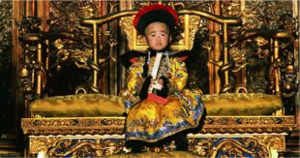 r is he was taken from his home and appointed at the young age of three. A critical aspect of the film is how the emperor’s clothing changes over time in relation to the events that occur around him. To start off, lets begin with the first picture. We see in this picture the three-year-old emperor at his coronation ceremony. He is dressed in traditional Chinese emperor attire that entails the robe, hat and the color yellow. The color yellow is significant because in traditional Chinese culture only the emperor could wear yellow. By him wearing yellow we see that Chinese traditions are still in tacked in this section of the film. Another thing to take notice of in the emperor’s outfit is how large it is. It is interesting to see such a small child in the attire an older man would wear. The proportions facilitate the strangeness of such a young child becoming the ruler of an empire. The next picture is a snap shot of the grown emperor, his wife, and his mistress in a car no longer in the Forbidden City. Th
r is he was taken from his home and appointed at the young age of three. A critical aspect of the film is how the emperor’s clothing changes over time in relation to the events that occur around him. To start off, lets begin with the first picture. We see in this picture the three-year-old emperor at his coronation ceremony. He is dressed in traditional Chinese emperor attire that entails the robe, hat and the color yellow. The color yellow is significant because in traditional Chinese culture only the emperor could wear yellow. By him wearing yellow we see that Chinese traditions are still in tacked in this section of the film. Another thing to take notice of in the emperor’s outfit is how large it is. It is interesting to see such a small child in the attire an older man would wear. The proportions facilitate the strangeness of such a young child becoming the ruler of an empire. The next picture is a snap shot of the grown emperor, his wife, and his mistress in a car no longer in the Forbidden City. Th e emperor is wearing a European traditional black and white tuxedo. His women are wearing traditional western dresses and accessories. This outfit change is very noteworthy. We see here that the three are totally disconnected to there traditional past in this point of time. They are no longer in the Forbidden City and have since broken away from that lifestyle. A few more things to notice about the outfits in this scene are the emperor’s glasses and his short hair cut. In traditional Chinese culture the emperor would never wear glasses and never cut his hair. The fact that he has done both shows that he has left his role of emperor in the past and trying to assimilate into western culture. By looking at the contrast of the first and second pictures we can see the transition the emperor had to make as he was kick out of his empirical home. Outfit choices in movies help aid the story line and bring forth important ideas that that are not necessarily spoken.
e emperor is wearing a European traditional black and white tuxedo. His women are wearing traditional western dresses and accessories. This outfit change is very noteworthy. We see here that the three are totally disconnected to there traditional past in this point of time. They are no longer in the Forbidden City and have since broken away from that lifestyle. A few more things to notice about the outfits in this scene are the emperor’s glasses and his short hair cut. In traditional Chinese culture the emperor would never wear glasses and never cut his hair. The fact that he has done both shows that he has left his role of emperor in the past and trying to assimilate into western culture. By looking at the contrast of the first and second pictures we can see the transition the emperor had to make as he was kick out of his empirical home. Outfit choices in movies help aid the story line and bring forth important ideas that that are not necessarily spoken.
denotation is plenty and need more connotative comments

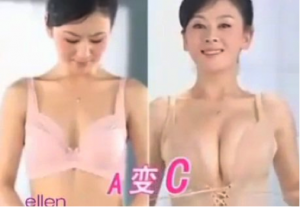 breast enhancement advertisement. The ad was shown on the Ellen DeGeneres talk show. In the advertisement, women put on the bra like device that is meant to be pulled in repeatedly. This action of pulling the breast together is said to bring other fat from other areas of the body to the breast region. On the Ellen show she mocks how implausible this process would be in effectively enlarging the breast. This begs the question,
breast enhancement advertisement. The ad was shown on the Ellen DeGeneres talk show. In the advertisement, women put on the bra like device that is meant to be pulled in repeatedly. This action of pulling the breast together is said to bring other fat from other areas of the body to the breast region. On the Ellen show she mocks how implausible this process would be in effectively enlarging the breast. This begs the question, 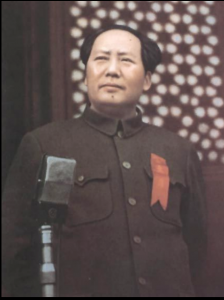
 Individual idem and inner meanings:
Individual idem and inner meanings: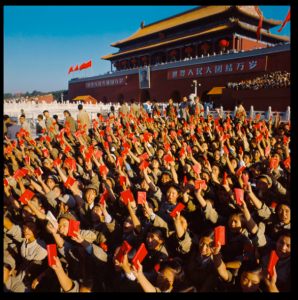 The Mao suit and Society:
The Mao suit and Society:

